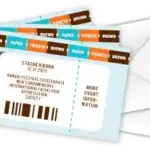As we age, safety and peace of mind become increasingly important in our everyday lives. For many, this means investing in a medical alert symbol to communicate vital health information in case of an emergency. However, not all medical alert symbols are created equal.
It’s important to know what to look for when it comes to a quality symbol and how to wear it properly to ensure maximum effectiveness. In this guide, we will discuss the key elements to consider when selecting a medical alert symbol.
We will also provide practical tips on where and how to wear your symbol to ensure it can be easily noticed and understood in an emergency. Read on.
The Anatomy of an Effective Medical Alert Symbol
Not all medical alert symbols are created equal. The effectiveness of such a symbol hinges on various factors, from its design and information legibility to the quality of materials used. An ideal medical alert symbol should fulfill the following criteria:
Clear Identification
The primary purpose of a medical alert symbol is to clearly and quickly inform responders of your medical condition. It should be easily identifiable as a mainstream healthcare indicator. The universal symbol for a medical alert-two snake coiled around a staff-is instantly recognizable and should form the core of your design.
Durable Materials
Your medical alert symbol will be exposed to life’s wear and tear. It must be made of durable materials that can withstand everyday activities, including showering and exercising. Look for options in stainless steel, titanium, or durable plastics.
Legible Information
The information on your alert symbol must be easily readable. Ensure that there are no abbreviations that may be confusing to emergency personnel. High contrast and clear fonts are essential for legibility, especially for those with visual impairments.
Customizable
Medical conditions can change, so your alert symbol should be customizable. This could mean an engraved plate that you update as needed or an alert bracelet with interchangeable tiles.
Comfortable to Wear
Given that you will likely be wearing your medical alert symbol at all times, comfort is critical. It should be adjustable and fit appropriately so that it neither restrains nor catches unwanted attention.
Styles and Trends: Finding Your Fit
With the prevalence of medical conditions requiring awareness, the market for medical alert symbols has expanded to accommodate a variety of styles. The typical medical alert bracelet has evolved into a range of styles to suit personal fashion preferences. Options include:
Classic Bracelets
A timeless choice, classic bracelets feature a center plate with a medical alert symbol and your critical information. They come in various materials, such as sterling silver or leather, and are ideal for those who want a subtle yet visible form.
Watch Integrations
For those who wear watches daily, wristwatches with an integrated medical alert symbol can be a convenient and discrete option. These watches often have a fold-out compartment or engraved backing.
Necklaces
Medical alert necklaces are a popular pick for those who prefer neckwear. They come in various pendant designs and chain lengths to accommodate different styles and preferences.
Sport Bands
Active individuals and athletes may opt for sports bands with a medical alert symbol. These are typically made of a flexible, water-resistant material and offer a secure fit during physical activities.
Tech-Integrated Options
For the technologically inclined, there are now medical alert symbols with tech integrations, such as USB drives containing detailed medical information, or smart devices that can signal for help.
Legally Compliant Alert Jewellery
In many countries, medical alert symbols are a legal requirement for patients with certain conditions. To ensure compliance, the symbol must meet specific standards and guidelines set by healthcare regulators.
Recognized Standards
Familiarize yourself with the specific standards that your medical alert symbol must meet. These could include size, symbol design, and information content regulations.
Certification
Look for alert symbols that are certified by relevant authorities. This certification serves as validation that the symbol meets legal and safety requirements.
Medical Alert Services
Some companies offer medical alert services integrated with wearable symbols. These services can include 24/7 emergency call centers and remote monitoring, providing an added layer of protection.
Personalizing Your Alert Symbol
Your medical alert symbol should provide responders with critical information. This means it should include, at a minimum, your name, medical condition, and an emergency contact number. However, the process of personalization goes beyond these basics.
Unique Needs
Consider what additional information may be helpful in your specific case. This could include blood type, allergies, or the type of care you require in the event of an emergency.
Multilingual Information
For those who travel or live in multilingual areas, having your medical information in different languages can be a lifesaver. Engraved alert symbols with space for various languages are a prudent choice.
Symbol Configurations
In case space is limited, have a priority list of what information should appear first. You may also want to indicate where to find a more comprehensive medical profile, such as an online healthcare platform or a wearable tech device.
Maintaining and Updating Your Symbol
Like all things related to health, your medical alert symbol requires maintenance and updating to be effective. Here’s how to ensure that your symbol is always current:
Regular Checks
Inspect your medical alert symbol periodically for wear or illegibility. If the information is starting to fade or the bracelet is showing signs of damage, it’s time for a replacement.
Transitions in Health
In the event of a change in medication, diagnosis, or treatment, update your medical information promptly. Be it through an engraved inscription or a connected service, ensure that your updates are clear and comprehensive.
Accessibility to Your Symbol
Your medical alert symbol is of no use if it’s not accessible in an emergency. Keep it on your person or within arm’s reach at all times, and inform those close to you of its location.
The Psychosocial Aspect of Medical Alert Symbols
Wearing a medical alert symbol can have implications beyond the functional. It’s a marker of your health status, which some may find distressing. It’s important to address the psychosocial aspects associated with it:
Normalizing the Symbol
Remind yourself that the symbol is a tool for your well-being. Normalizing its presence in your life can reduce any stigma you may associate with it.
Communicating Its Importance
Explain to those around you the importance of the medical alert symbol and how it aids in your care. Open communication can elicit support and understanding.
Support Systems
Utilize support groups or counseling services if you’re struggling with the emotional impact of wearing a medical alert symbol. Sharing experiences can provide comfort and a sense of community.
What to Look for in a Quality Medical Alert Symbol and How to Wear It
When selecting a medical alert symbol, it is not just about the features it offers; the quality of the product itself is crucial for its durability and effectiveness. Here are some key considerations:
High-Resolution Engraving
Choose a medical ID bracelet with high-resolution engraving to ensure that even the smallest details are clear and readable. This could be the difference in emergency personnel being able to understand your vital medical information at a glance.
Water and Scratch Resistance
Your medical alert symbol should be able to withstand daily exposure to water and resist scratching. This means choosing one with a protective coating or made from materials known for their resilience.
Hypoallergenic Materials
For those with sensitive skin, hypoallergenic materials such as surgical-grade stainless steel or medical-grade silicone can prevent skin irritation and ensure the symbol is comfortable to wear all day.
Secure Fastening
A medical alert symbol that comes undone easily defeats its purpose. Look for secure clasps and lock mechanisms that prevent the symbol from being lost, especially during rigorous activity.
Versatility in Wear
The method of wearing your custom medical ID should align with your lifestyle. Whether it’s a bracelet, necklace, or accessory, the symbol should be something you can comfortably wear in various settings, from professional environments to physical activities.
Visible and Accessible
Wear your symbol on the outside of your clothing and not hidden beneath layers. Emergency personnel should be able to find it with no trouble, so avoid tucking it away.
Updated Regularly
As your health changes, so should the information on your medical alert symbol. Establish a routine to review the content on your symbol, ensuring that it is current and reflects your latest medical situation.
A Part of Your Daily Routine
Integrate wearing your medical alert symbol into your daily routine, much like putting on a watch or glasses. This consistency ensures that it’s always with you when you step out of the house.
A Balance Between Function and Style
While the primary purpose is safety, there’s no harm in choosing a comfortable medical ID that also aligns with your style. It is aesthetically pleasing and can make wearing it daily more enjoyable.
Get the Right Medical Alert Symbol Today
In conclusion, when choosing a medical alert symbol, it’s important to consider the durability, legibility, and comfort of the piece. It should also be worn consistently in a visible location for easy identification in case of an emergency.
Remember, a quality medical alert symbol can potentially save your life, so don’t hesitate to invest in one today. Stay safe and be prepared always.
If you want to read more articles, visit our blog.






